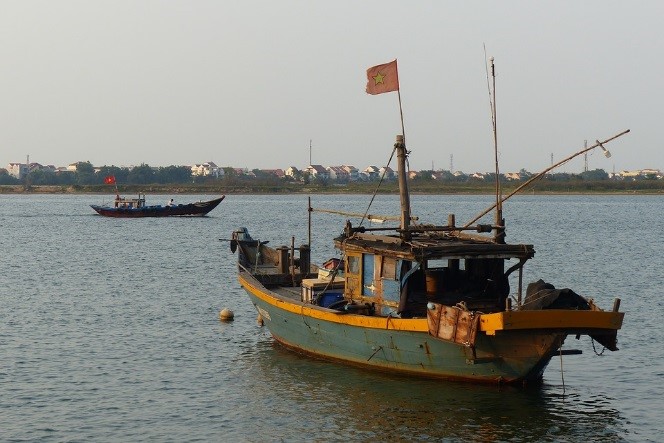
They’ve got the power: the global fishing fleet has doubled to 3.7 million with motorised vehicles accounting for almost 70 per cent of boats
Globally, 120 million people depend on fishing for their income, and exports from fisheries are valued at $102 billion. Demand for fish also continues to grow. But how many commercial fishing fleets exist, and what does this mean for managing our ocean resources?
One boat, two boat, millions of boats!
Take a guess at how many marine fishing fleets exist in the world? Thousands, millions, billions?
New research has found that the global fishing fleet has grown from 1.7 million vessels in 1950 to 3.7 million in 2015.
There has been an increase in motorised fishing boats, a change from the unpowered ‘artisanal’ fishing vessels that once characterised Asian and African fishing fleets.
They also have more oomph now, with total engine power across the fleet increasing from 25 to 145 GW.
It is expected that based on current trends, there’ll be another one-million motorised boats by 2050.
Putting in the fishing effort
Although the number of fishing boats has doubled since 1950, the amount of effort for catch has fallen by up to 80 per cent. This means that despite there being more fishing boats, not as much fish is being caught.
The well-being of fish stocks is measured using catch per unit of effort (CPUE). CPUE indicates how many fish are caught for the amount of effort expended, such as during a day’s fishing. It doesn’t provide the exact index of fish abundance but it can be used as a relative index.
In recent years a sharp drop in CPUE in Southeast Asia, Latin America and the Southern Mediterranean indicate their fisheries expanded at a much faster rate than fish stocks could support. So even though there are more fishing fleets with powered engines to enable them to travel further and faster, they are having to work much harder to catch fewer fish.
How do we make it more efficient?

What is CPUE? It’s catch per unit of effort, measuring how much effort fishing fleets are expending for the amount of fish caught
Casting a line for sustainability
Now that we know how many boats there are, with a transition from unpowered, small vessels to industrial fleets, countries across the globe can allocate better resources to manage fishing fleet processes and develop robust protocols to sustain stock levels.
Thankfully, Australia has some of the best-managed fisheries in the world, with fisheries management already introducing fleet reduction schemes to effectively decrease the size of commercial fleets in relevant jurisdictions. This has likely contributed to the stabilisation of CPUE seen in the Australian region.
Developing regional management tools in countries around the world will ensure better protection of our marine ecosystems, food security and livelihoods. This is particularly important for populations in regions such as Southeast Asia, where a high proportion of people rely on fish for sustenance.
There’s no better catch than that.


7th June 2019 at 7:06 pm
Ban fishing for five years world wide to give the numbers of fish a chance to bounce back
2nd June 2019 at 6:02 pm
Putting in the fishing effort – the gremlins appear to have achieved a switcheroo – the first paragraph should surely read “catch for effort has fallen by about 80%”